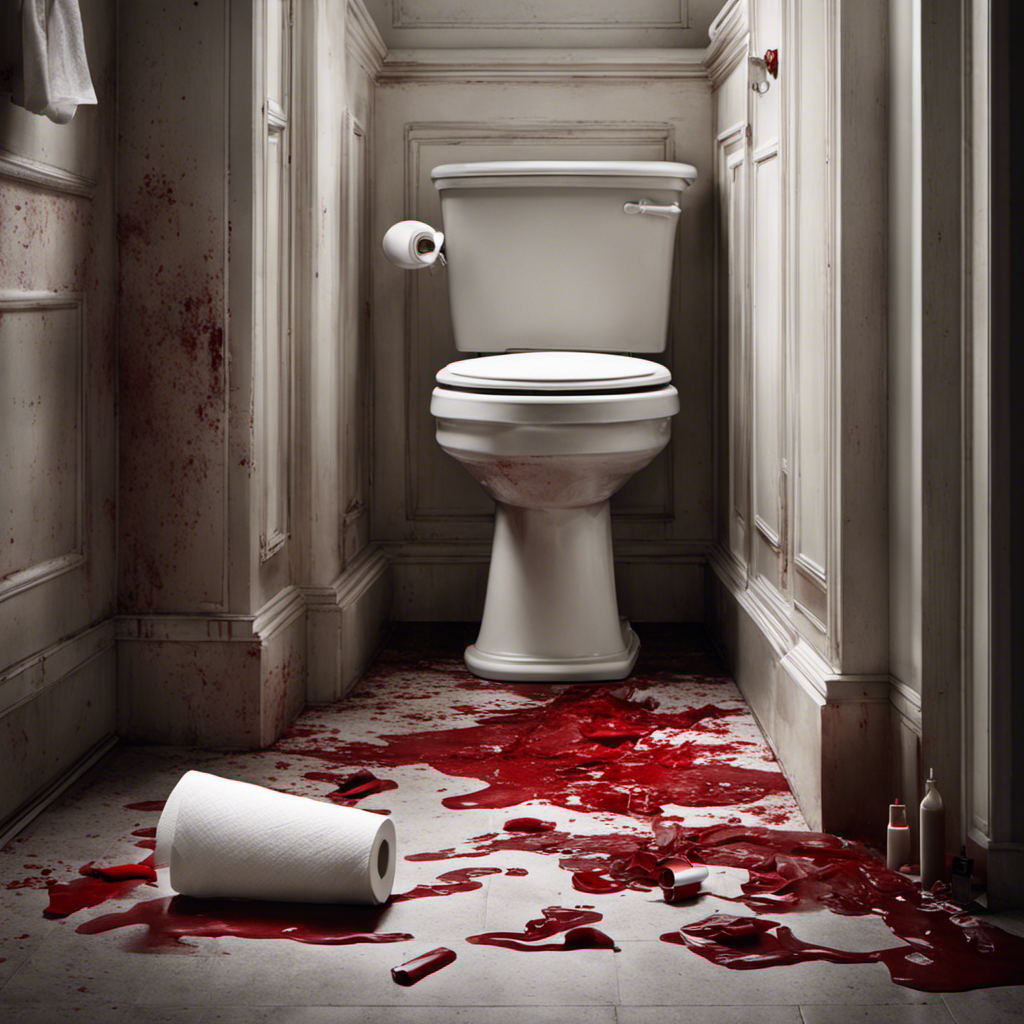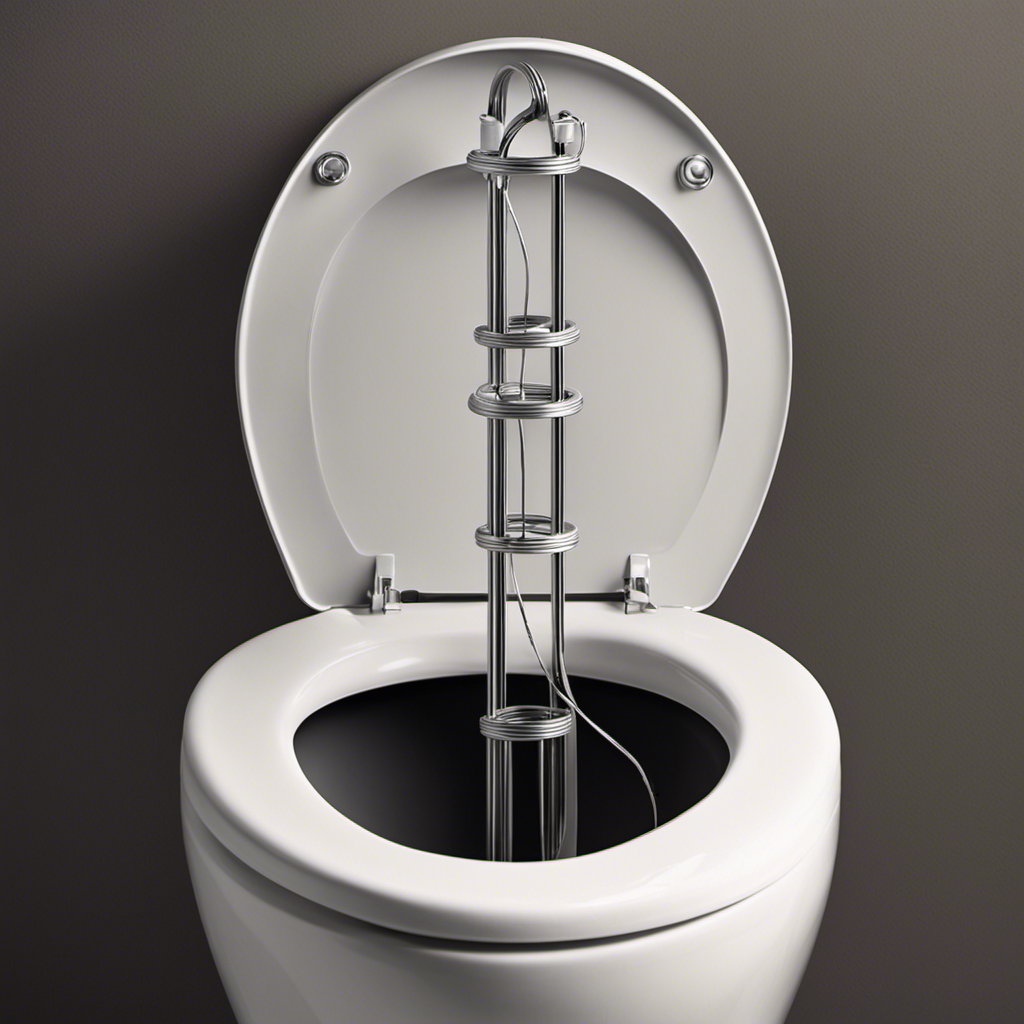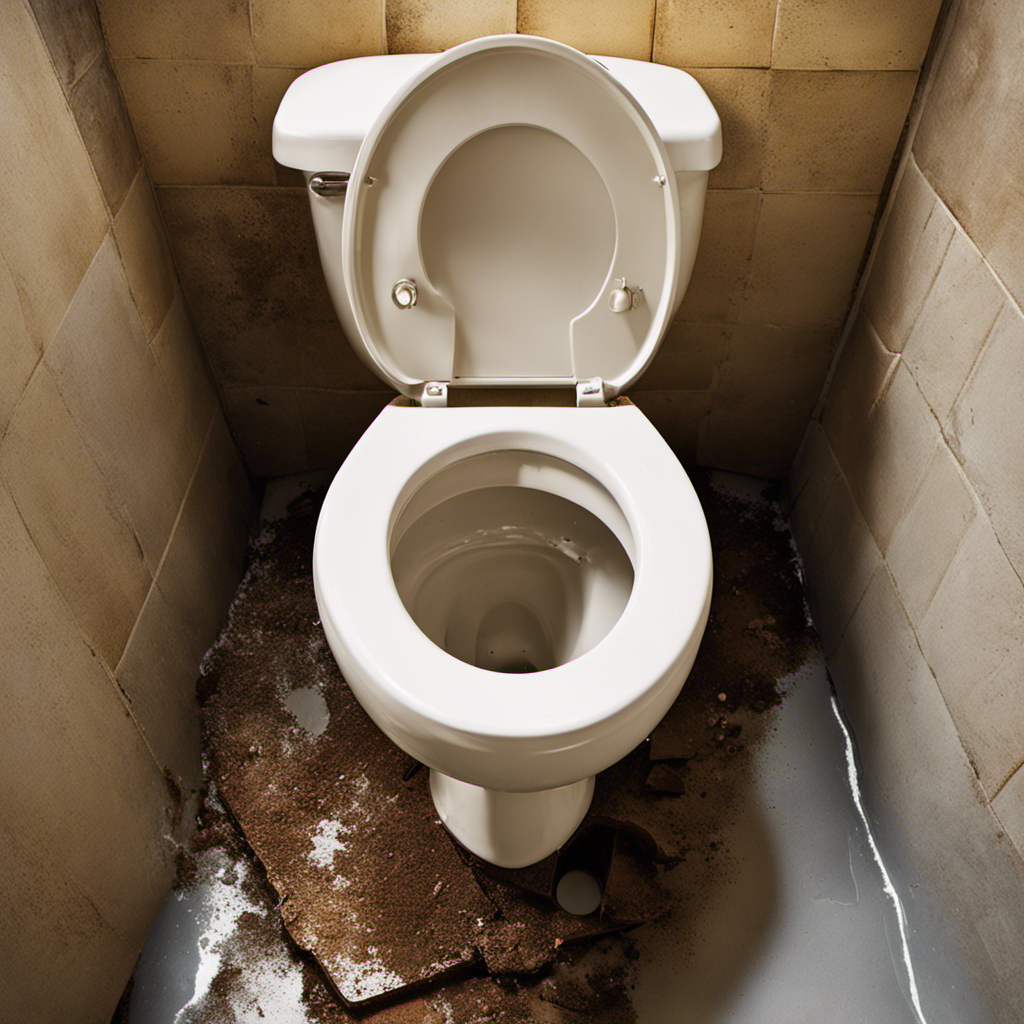As I stared at the crimson streak on the toilet paper, a surge of worry washed over me. Blood on toilet paper when wiping is a concerning problem that many people experience.
In this article, I will delve into the various causes behind this issue, including hemorrhoids and anal fissures. Additionally, I will provide valuable tips for prevention and treatment, as well as guidance on when it is crucial to seek medical attention.
So, let’s explore this topic together and find the answers we seek.
Key Takeaways
- Hemorrhoids and anal fissures are common causes of blood on toilet paper when wiping.
- Lifestyle changes, over-the-counter medications, and surgical procedures are treatment options for hemorrhoids and anal fissures.
- Maintaining proper hygiene, staying hydrated, and consuming a high-fiber diet can help prevent and treat blood on toilet paper.
- It is important to seek medical attention for persistent or worsening symptoms, as untreated conditions can lead to complications such as infection, blood clots, or anemia.
Causes of Blood on Toilet Paper
There are several possible causes for blood on toilet paper when wiping. One of the most common causes is hemorrhoids. Hemorrhoids are swollen blood vessels in the rectal area that can cause discomfort, itching, and bleeding.
Other causes of rectal bleeding include anal fissures, which are small tears in the lining of the anus, and inflammatory bowel disease, such as Crohn’s disease or ulcerative colitis.
In some cases, rectal bleeding may be a sign of a more serious condition, such as colorectal cancer. It is important to seek medical attention if you experience persistent or severe rectal bleeding.
Treatment for hemorrhoids may include lifestyle changes, such as increasing fiber intake and avoiding straining during bowel movements, as well as topical creams or procedures to reduce swelling.
Understanding the underlying cause of rectal bleeding is crucial for proper treatment and management.
Understanding Hemorrhoids and Anal Fissures
To better understand hemorrhoids and anal fissures, you should be aware of common symptoms and risk factors. These conditions can cause discomfort and bleeding, leading to blood on toilet paper when wiping.
Here are three important things to know about hemorrhoids and anal fissures:
-
Treatment options for anal fissures and hemorrhoids: There are various treatment options available, including lifestyle changes, over-the-counter medications, and surgical procedures. Your healthcare provider can recommend the best approach based on the severity of your condition.
-
Lifestyle changes to prevent recurrence of blood on toilet paper: Making certain adjustments to your daily routine can help prevent these conditions from coming back. This may include eating a high-fiber diet, drinking plenty of water, avoiding straining during bowel movements, and practicing good hygiene.
-
Seeking professional help: If you experience persistent bleeding or severe symptoms, it is important to consult a healthcare professional. They can provide an accurate diagnosis and guide you towards the most appropriate treatment plan.
Common Symptoms and Signs
If you’re experiencing discomfort or itching around the anal area, it could be a sign of hemorrhoids or anal fissures. Hemorrhoids are swollen blood vessels in the rectum or anus, while anal fissures are small tears in the lining of the anal canal. Both conditions can cause bleeding and blood on toilet paper when wiping.
Causes and risk factors for hemorrhoids and anal fissures include straining during bowel movements, chronic constipation or diarrhea, obesity, pregnancy, and a sedentary lifestyle. These conditions can lead to increased pressure on the veins in the rectum or to trauma in the anal canal.
Potential complications of hemorrhoids and anal fissures include infection, excessive bleeding, and the formation of blood clots. It is important to seek medical attention if you experience persistent bleeding or if the symptoms worsen.
Below is a table summarizing the causes, risk factors, and potential complications of hemorrhoids and anal fissures:
| Causes | Risk Factors | Potential Complications |
|---|---|---|
| Straining during bowel movements | Chronic constipation or diarrhea | Infection |
| Obesity | Pregnancy | Excessive bleeding |
| Sedentary lifestyle | Formation of blood clots |
Tips for Preventing and Treating Blood on Toilet Paper
One way you can prevent and treat the issue is by maintaining proper hygiene in the anal area. Here are three important tips to help you prevent bleeding hemorrhoids and find relief from anal fissures:
-
Keep the area clean: Gently clean the anal area after each bowel movement using mild, unscented soap and warm water. Avoid using rough toilet paper or wipes that contain alcohol or fragrance, as they can irritate the skin.
-
Stay hydrated and eat a high-fiber diet: Drinking plenty of water and eating foods rich in fiber, such as fruits, vegetables, and whole grains, can help soften stools and reduce straining during bowel movements, which can contribute to hemorrhoids and anal fissures.
-
Use home remedies: Applying a warm compress or soaking in a warm sitz bath for 10-15 minutes a few times a day can help relieve pain and promote healing. You can also try over-the-counter creams or ointments that contain witch hazel or aloe vera to soothe the affected area.
When to Seek Medical Attention
When you experience persistent or worsening symptoms, it’s important to consult a healthcare professional for further evaluation and treatment options.
While blood on toilet paper may be a common occurrence, it can also be a sign of underlying issues such as hemorrhoids or anal fissures. If left untreated, these conditions can lead to complications such as infection, blood clots, or anemia. Therefore, seeking medical attention is crucial to prevent any potential complications.
Additionally, incorporating a healthy diet and lifestyle can play a significant role in preventing blood on toilet paper. Consuming fiber-rich foods, staying hydrated, and maintaining regular bowel movements can help prevent constipation and reduce the strain on the anal area. Incorporating exercise into your routine can also improve overall bowel function.
Conclusion
In conclusion, it’s important to understand the causes and symptoms of blood on toilet paper when wiping. Hemorrhoids and anal fissures are common culprits, but there are ways to prevent and treat this issue.
However, if the problem persists or becomes severe, it’s crucial to seek medical attention. Our bodies often have ways of telling us when something is wrong, so why ignore the signs?
Take care of your health and seek help when needed.










